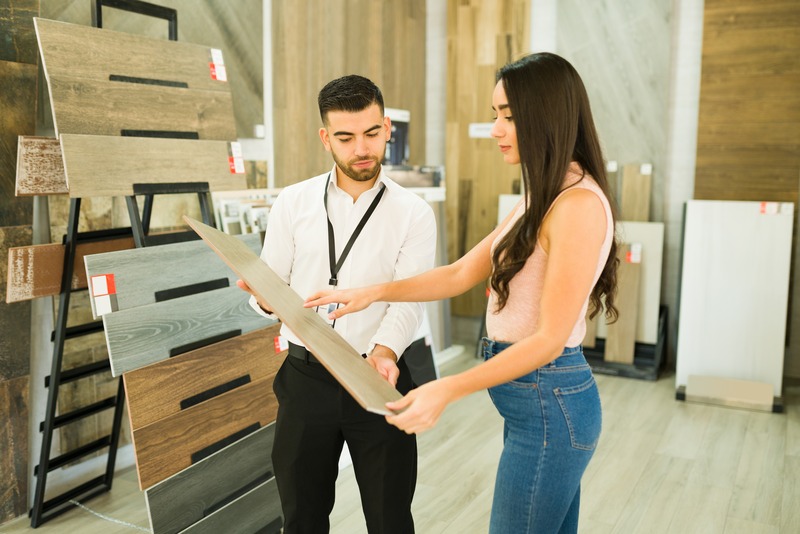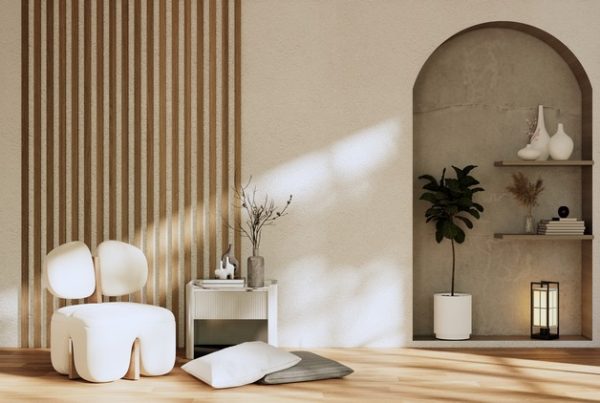As we gaze into the future of interior design, we stand at the precipice of a revolution. The field is set to undergo profound transformations driven by emerging trends, innovative materials, and significant societal shifts. These changes will redefine how spaces are designed and decorated. From living rooms that adapt to our moods to kitchens that minimize our environmental footprint, the future of interior design is poised to enhance both our homes and our lives.
The Influence of Societal Shifts
Societal shifts are dramatically influencing interior design. The rise of remote work, for example, is creating a demand for versatile living spaces. Homes now need to be both comfortable sanctuaries and efficient offices. This dual function is pushing designers to think creatively about space utilization, incorporating multifunctional furniture and soundproofing materials. Furthermore, an increasing awareness of mental health is leading to designs that promote wellbeing, with an emphasis on natural light, open spaces, and greenery.
Emerging Materials and Sustainability
Sustainability is at the forefront of future interior design trends. As environmental concerns grow, there’s a shift towards materials that are not only eco-friendly but also durable and stylish. Innovations like bio-based plastics and recycled textiles are becoming more prevalent. These materials offer a win-win: reducing waste while providing endless aesthetic possibilities. Additionally, advancements in technology are leading to smart materials that can adapt to temperature changes, improve air quality, and even harvest energy.
Smart Homes and Technological Integration
The integration of technology into our living spaces is set to redefine interior design. Smart homes, equipped with devices that anticipate our needs and adapt to our habits, are becoming a reality. This technological integration extends beyond gadgets, with walls and surfaces becoming interactive interfaces. Imagine paint that changes color based on the time of day or flooring that generates electricity as you walk. The possibilities are endless, and they promise to make our homes more comfortable, efficient, and personalized than ever before.
Aesthetic Trends and Personal Expression
In terms of aesthetics, personal expression and authenticity are becoming increasingly important. Future trends will likely move away from cookie-cutter designs in favor of spaces that reflect individual personalities and stories. This shift encourages the use of unique, handcrafted items and a mix of styles and eras. It’s a trend that celebrates diversity and creativity, inviting individuals to curate their spaces as extensions of themselves.
The Business Side of Design and Insurance Considerations
For interior designers and decorators, staying ahead in the rapidly evolving industry requires not just creativity but also savvy business practices. This includes understanding the importance of having the right insurance coverages. General Liability Insurance is crucial for protecting against third-party claims of property damage or injury. Business Owners Insurance offers a comprehensive package that includes property and liability coverage. For those in the business, Workers Comp Insurance is essential for covering employees in case of work-related injuries. Moreover, companies that use vehicles for business purposes should not overlook Commercial Auto Insurance. Lastly, Interior Decorator Business Insurance is specifically designed to meet the unique needs of those in the interior decorating field. Navigating these insurance needs is crucial for the modern interior design business, safeguarding against unforeseen circumstances and ensuring a stable foundation for creativity to flourish.
Impact of Mortgage Rates on Design
The current 8% Mortgage Rate Effect on New Home Building and Remodel is reshaping the landscape of interior design. Higher mortgage rates are making homeowners more cautious about large-scale remodels. Instead, there’s a focus on cost-effective updates that can refresh a space without breaking the bank. This economic reality is pushing designers to be more resourceful, seeking out materials and solutions that offer high impact at a lower cost.
The Evolution of Kitchen and Bathroom Design
Kitchens and bathrooms are at the forefront of design evolution. The Emerging Trends in Bathroom and Kitchen Remodeling point towards spaces that are not only aesthetically pleasing but also highly functional and sustainable. Innovations in these areas often include smart appliances that save water and energy, materials that resist bacteria and pollution, and designs that accommodate a range of abilities, ensuring accessibility for all.
Interior Designer vs. Interior Decorator
The distinction between an Interior Designer and an Interior Decorator is becoming more nuanced as the industry evolves. Designers are typically involved in the structural aspects of a space, requiring a deep understanding of architecture and engineering principles. Decorators, on the other hand, focus on the aesthetic and stylistic elements. Both roles are essential in the creation of functional, beautiful spaces, and the lines between them are increasingly blurring as professionals in the field seek to offer comprehensive services.
The Future is Now
The future of interior design is vibrant and diverse, shaped by technological advancements, environmental consciousness, and the timeless pursuit of beauty and functionality. As we look forward to the next big trends, it’s clear that our homes and workspaces will continue to evolve in exciting ways. For those in the field, embracing these changes while navigating the practicalities of business, such as insurance and market dynamics, will be key to success. The future is not just about predicting trends but creating spaces that inspire, comfort, and sustain us for years to come.










